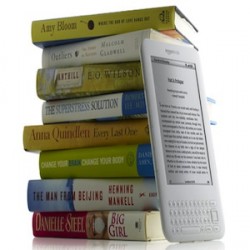E-readers are becoming more and more common in today’s society. Amazon expects to sell more e-books than printed books this year. Institutions of higher education have long resisted the trend towards e-readers, but master’s degree research suggests e-readers may improve students’ ability to retain information if some of the technology’s limitations can be addressed.
The major problem with e-readers is they’re designed for pleasure reading rather than academic reading and thus lack some features students need for scholarly use. Academic reading requires students to interact with the text in different ways, which may not be supported by current e-reader technology.
For example, most e-readers make it difficult for students to take notes while they’re reading. Many students mark up books, highlighting key passages or writing notes in the margins. E-readers’ functionality mostly remains limited in this regard, and while some students carry paper so they can take notes as they read, others prefer to carry printed books so they can continue to take notes the usual way.
Of course, e-books can’t and shouldn’t simply mimic printed books. To make these needed improvements e-reader designers should consider how to best meet students’ needs in academic settings. For example, the Amazon Kindle provides standardized locations within text, regardless of the font size readers use, they can navigate to specific places in the text that are marked as “locations.” Similar technology could be used to help students look up references in other books loaded onto their e-readers or to navigate to a parallel notes page.
Designers also need to consider the strategies students use to retain information. Many students pre-read by skimming illustrations or subheadingss before reading the text. Devices that make this difficult will prove less useful to scholars (and likely other readers as well).
Despite these shortcomings, the technology is worth developing because it could eventually be more convenient for students. E-readers could replace bulky, heavy textbooks, save paper on printed texts, and more flexibly accommodate students’ different reading and learning styles.
When e-reader technology catches up with academic needs, it will likely become a large part of college students’ reading experiences. However, e-readers probably won’t completely replace paper books, at least not immediately. Instead, they’re likely to become one more tool in students’ reading arsenal, and perhaps in time the whole arsenal itself.




